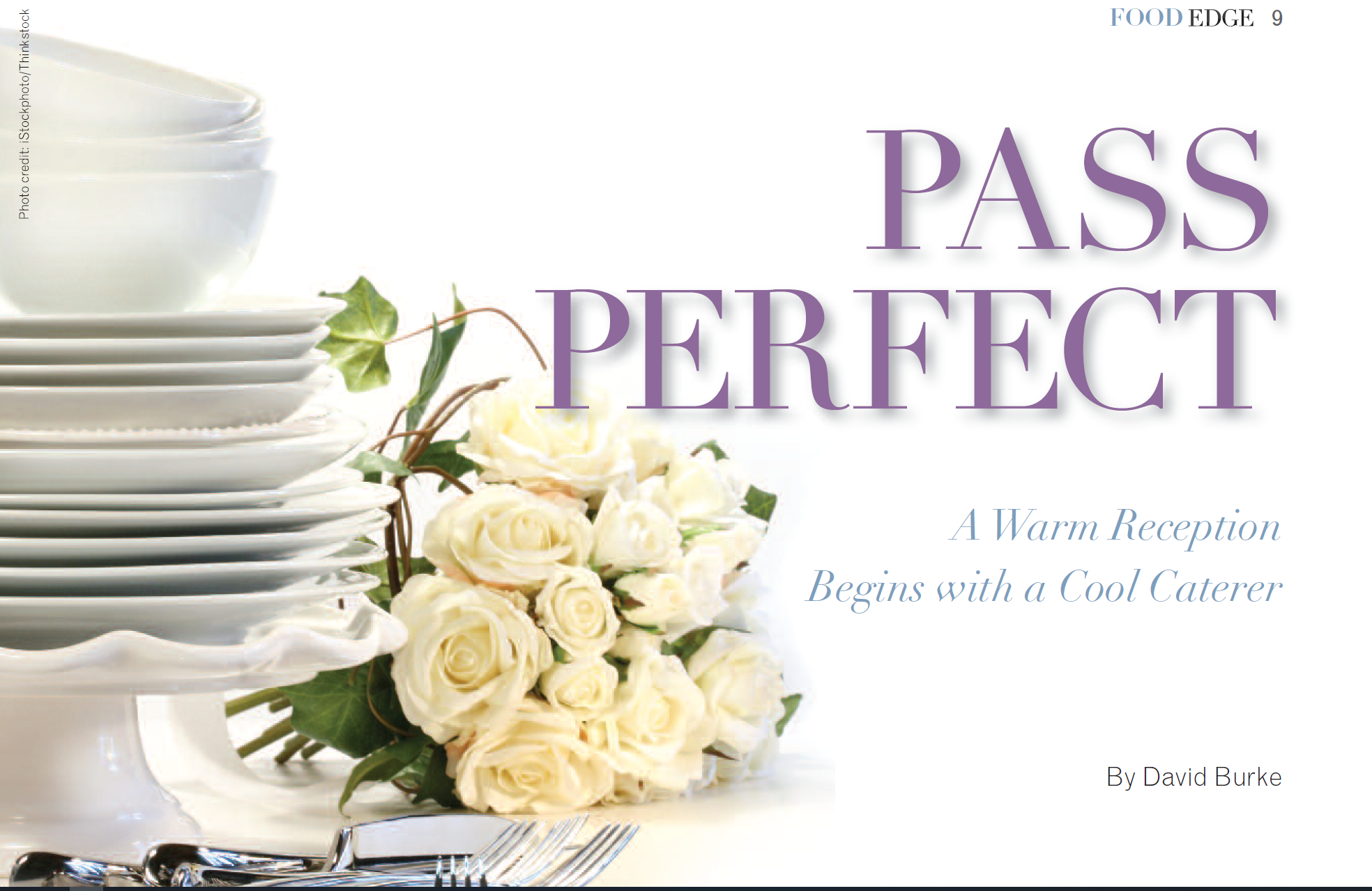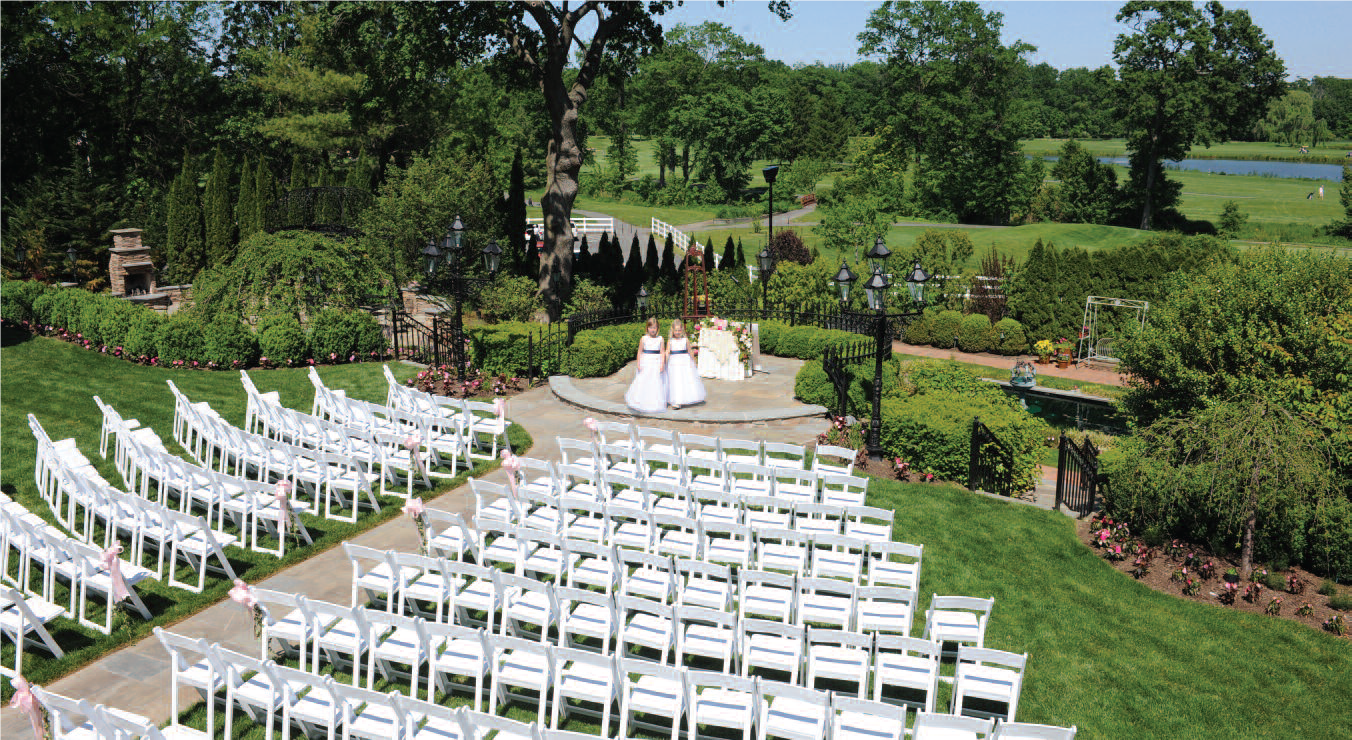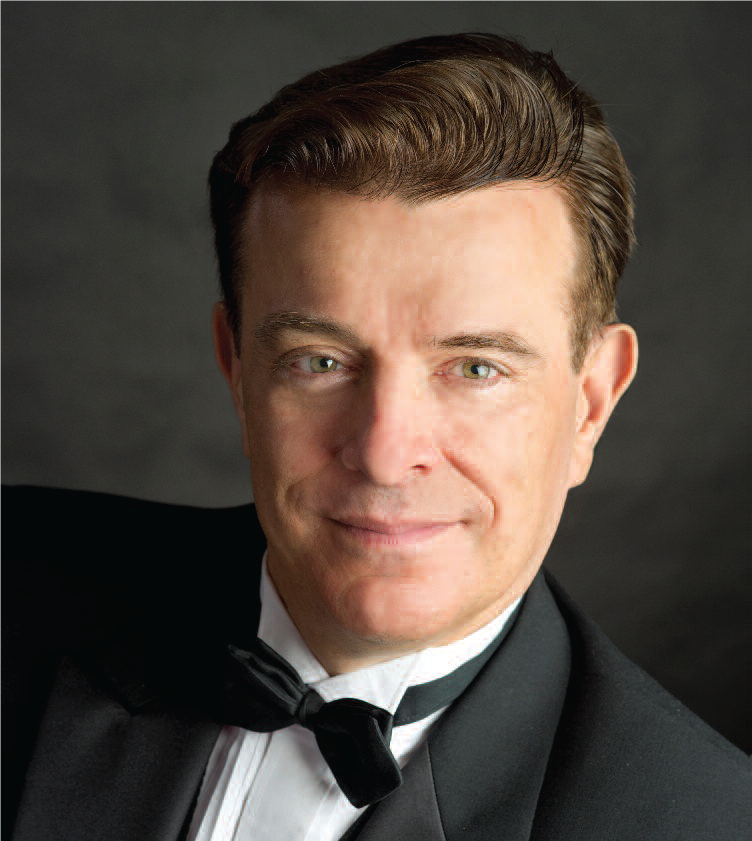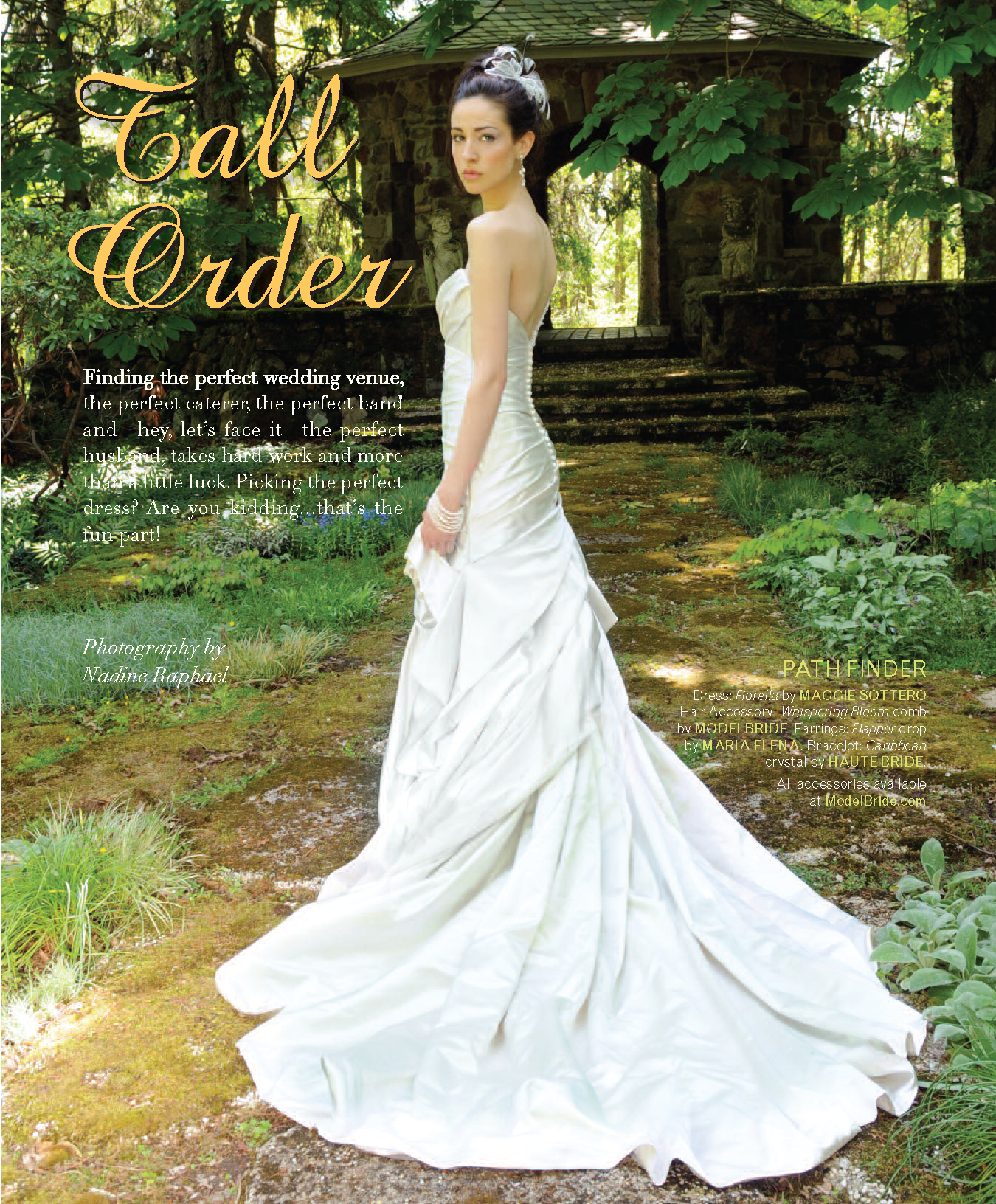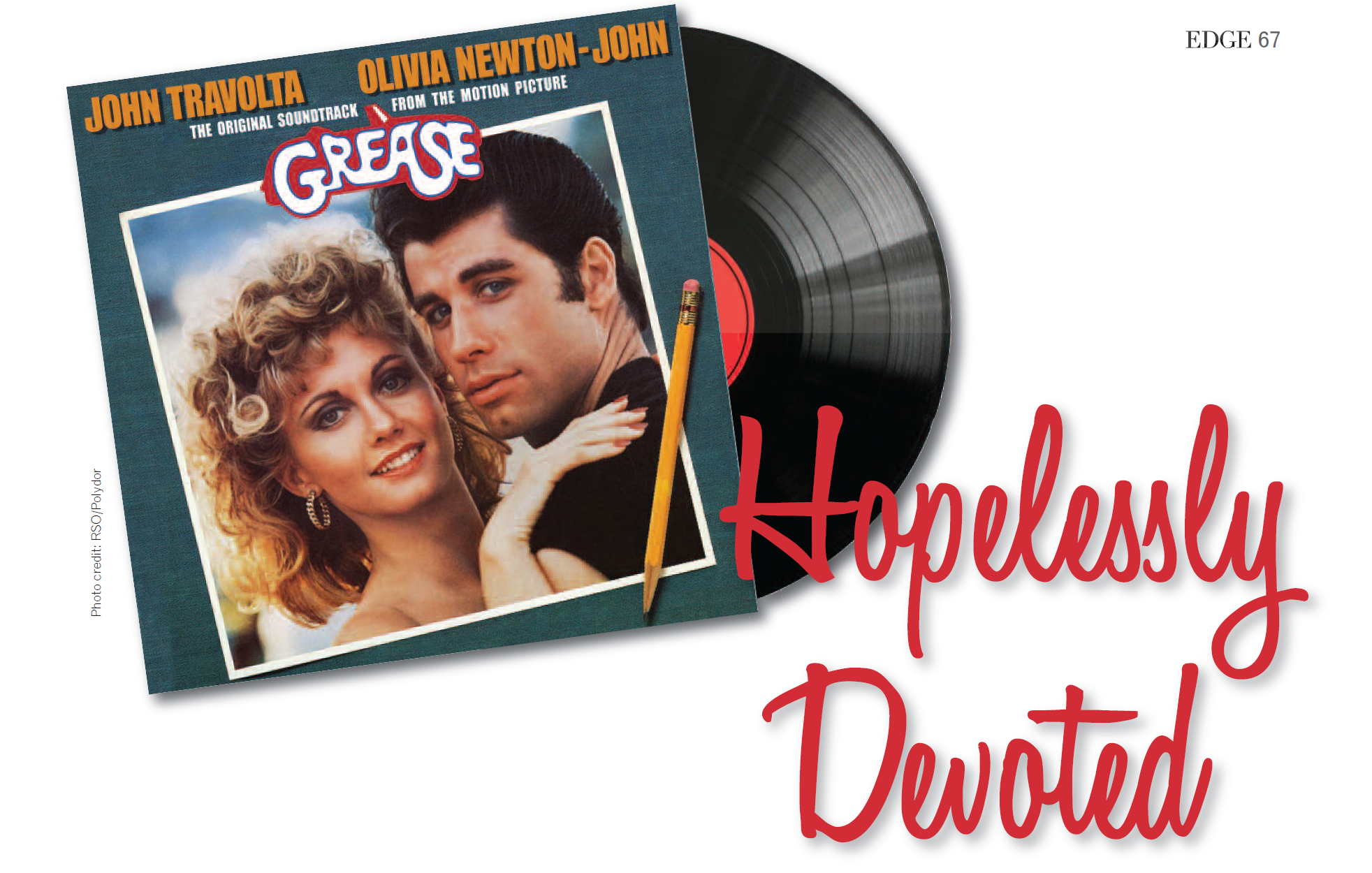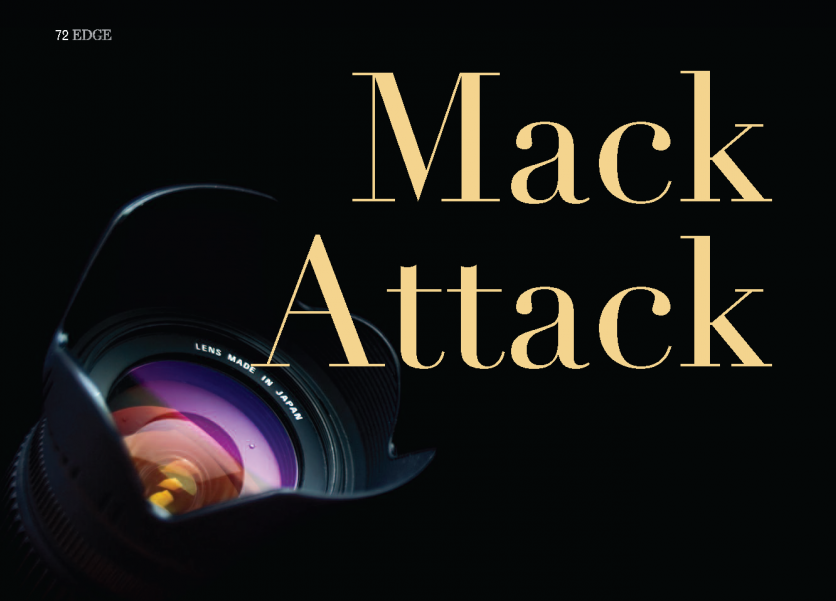A Warm Reception Begins with a Cool Caterer

Photo credit: iStockphoto/Thinkstock
Call me biased but I think great, memorable food is the key ingredient in a great, memorable wedding reception. It’s not just me. I know people who were married decades ago who can’t name half their wedding guests, but they can tell you to this day in excruciating detail what they thought of the food. Pick the right caterer for the right reasons and you’ll be golden. Choose the wrong one and, well, let’s not go there. Most people know me as a restaurateur or “celebrity chef” so they are surprised when they’re doing that first bit of wedding research and my name suddenly pops up as someone who caters receptions. So are people from this area who approach me at David Burke Kitchen in New York, or at Fromagerie in Rumson, looking for a catering recommendation.
I like to do weddings and other big events outside of my restaurants. I’ve got an entire staff devoted to catering now, and it’s becoming an increasingly important part of my business. Think about it. If I am pulling out all the stops for 150 people and creating a totally unique wedding experience, maybe only a fraction of those guests have been to one of my places. So when we do a great job, it’s a powerful advertisement for the restaurants—and, of course, for future weddings and other events, like fundraising galas. By the same token I do have an advantage in this business in that the couple that contacts me has almost certainly experienced my menu before and liked it.
Consequently, that first conversation isn’t so much a selling opportunity as an opportunity to ask them what they love about my food and how they envision incorporating it into their event. That being said, I also know that those same folks may also be considering two or three other competing options, so I still have to make them go Wow! In fact, I think when you go shopping for a wedding caterer you should set the bar high—make them make you go Wow! For me, the wow factor is all about coming up with really cool ideas, ideas that go beyond what any other caterer might think of. I hate handing out a menu and saying, “Here, pick one of these.” I want to create a unique wedding. I’m not afraid to take chances, and if the couple thinks the same way then we can do some fun stuff.
That’s why I think it’s crucial to get a read on their personalities and their shared experiences, and use that as a springboard. I like to know where they met and what was their first meal together. You never know where that first bit of inspiration will come from. But once you’ve got that, you build it out to include the food, the cake, the table settings and the gift bags. One thing I try to encourage clients to do is think about elements of interactivity and craftsmanship. It might be an artist carving an ice sculpture during the reception. It might be meringue floating on balloons. It might be a kitchen tour—people are so curious about food and what chefs are doing. The wedding cake is always an interactive experience, but why not take that to the next level? Everyone assumes a cake has to be made days in advance.
That’s not necessarily the case. We can bring in a master baker to create the cake during the wedding, and guests can actually have a hand in the finishing touches. And who doesn’t like to lick the bowls? We can set it up so everyone “licks the bowl” at their tables. Of course, fewer and fewer weddings these days are what I’d call traditional sit-down affairs. A lot of conversations I have begin with, “I want something different than a fully plated meal.” They don’t want people to feel stuck to the table. However, the fact is that there is almost always some sort of sit-down component—and the main course choices do need to be somewhat traditional, because your goal there is to please as many people as possible. You can’t put skate or bluefish or sweetbreads on the menu. But that doesn’t mean you play it safe, either. On the contrary, we can do some eye-opening things within the confines of chicken-salmon-filet-vegetarian. If someone says let’s do prime rib and baked potato, fine, we’ll sex it up and make it modern. It’ll be the best they ever had. By the same token, if someone wants burgers or meat loaf or some other comfort food at a wedding, we’ll do it. That’s what we’re all about. I was thinking that I’d love to do a breakfast wedding. Has anyone ever tried that before? I wonder. This shifting focus on creating a series of extraordinary hors d’oeuvres I think is fantastic. Anyone who knows me knows that I love that kind of challenge. Ideally, I like to do eight to ten at a reception. It gives us a chance to show off.
Making the Call The ideal time to pick your wedding caterer is six to nine months before the big day. The three pieces of information you’ll need are the venue you’ve selected for the reception, the number of guests you are expecting and a rough idea of your budget. It’s not crucial to have nailed down the exact date, but a range of dates is helpful. The items you can expect to cover in your initial meeting include the type of reception you envision and how the event will flow. Do you want to lean toward the traditional, or make it fun and interactive? Is there a theme or trend that you’re interested in exploring? What don’t you like? Have you seen pictures in a magazine or on the web of a reception that sparks your imagination? If so, bring them to the meeting. Needless to say, there will be a lot of discussion about food choices. Don’t expect to make any decisions at this first encounter. A caterer may make suggestions to get a feel for your preferences, but nothing is set in stone. After that initial meeting, there will be a lot of follow-up to solidify as many details as possible. From there, the caterer will propose a menu crafted to fit your tastes, your reception theme and your budget. It’s a good idea to arrange a tasting if anything is undecided, especially as you get a little closer to the date. We’re fortunate in that most of our wedding clients have eaten in my restaurants or are familiar with my food from other catered events.

Photo credit: iStockphoto/Thinkstock
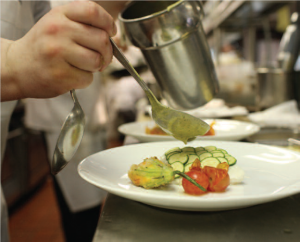
Photo courtesy of David Burke
Building a menu that pushes the envelope is the fun part of planning a wedding. The tricky part is making sure that your caterer can actually pull it off. We tend to end up working in venues with a lot of character but also a lot of quirks. It might be a museum in the city or a private estate in the country or a historic venue like Water Witch. Understanding the limits and the possibilities of these unique spaces is really important. It determines what equipment we truck in and how we staff an event. Don’t let caterers get away with saying, “No sweat, we got it covered”—especially in a space they haven’t worked in before. The devil is always in the details. Here are some rules of thumb. You’ll want one waiter for every 20 guests. You’ll want to make sure that there is a hierarchy in place. There should be a captain, a head bartender and someone in charge of the busing staff. That’s the front of the house.
Behind the scenes are the cooking and cleaning crews. For a wedding of 200 we typically bring at least six cooks and two or three people to keep the kitchen and prep areas clean and uncluttered. Don’t use a company you suspect is skimping on manpower. We usually err on the side of over-staffing events—we want to do such a good job, and that’s tough to do if you’re shorthanded. What else is reasonable to ask a wedding caterer to do? A caterer is not a party planner, but they can be helpful with details like flowers and audio/visual. I’d say we get involved in those areas—or at least make recommendations—about 15 percent of the time. We do work with party planners, probably at least 50 percent of the time. But nowadays a lot of people take on the wedding planning themselves. If they have opted not to go with a banquet hall, then they have already started down that path.
Sometimes in the eleventh hour the bride realizes she can’t handle it and she reaches out to us. We can usually see it coming, and we’re happy to help. So what should a catered reception cost? That’s the $64,000 question, isn’t it? If you care about food, obviously you want to devote as much of your budget as you can to making that part of your wedding memorable. If you want to transcend the basic beef-chicken-fish menu and make the food itself a series of unforgettable experiences, it comes with a price tag. But it’s not as much as you’d think. Depending on the venue you’ve booked, you’re probably going to end up between $150 and $300 a head. That number includes staff, rentals, etc. For this caliber of event—essentially the same party we’d do for the Whitney in New York—that is very competitive.
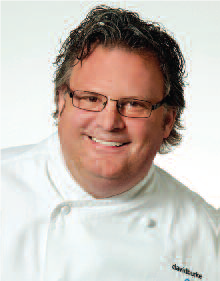 Editor’s Note: David owns David Burke Kitchen, David Burke Townhouse, Fishtail by David Burke and David Burke at Bloomingdales in New York, David Burke Fromagerie in Rumson, David Burke Prime in Connecticut and David Burke’s Primehouse in Chicago. www.davidburke.com
Editor’s Note: David owns David Burke Kitchen, David Burke Townhouse, Fishtail by David Burke and David Burke at Bloomingdales in New York, David Burke Fromagerie in Rumson, David Burke Prime in Connecticut and David Burke’s Primehouse in Chicago. www.davidburke.com
Business has never been better at many of NJ’s traditional wedding venues. A peek behind the scenes at the Park Savoy shows why.
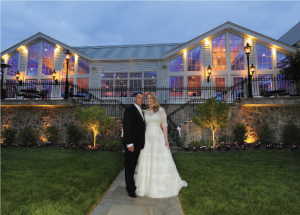
Photography by Light Impressions Photography ©2012 Courtesy of The Park Savoy Estate.
Every bride begins her matrimonial journey with one thought: Make my wedding day a day to remember. There is more than a little wiggle room within that sentiment. Theoretically, you could have an unforgettable service and reception in a field of daisies, the upper deck at Yankee Stadium, a tropical resort, or your college roommate’s uncle’s backyard. To the out-of-the-boxers we say more power to you. Theory is one thing, however, and practice another. Which is why, despite all those “do-it-yourself” receptions you hear about, the demand for formal wedding halls has never been greater. It also explains why the folks who brought you Naninas on the Park—those original take-charge guys Barry Maurillo, Joe Maurillo and Vito Cucci—had over 250 weddings booked (no, that’s not a typo) just a couple of weeks after reopening The Park Savoy Estate following a $6 million renovation that began last December.
It doesn’t take an expert to spot where the money went. Every square foot of the 19th century mansion—which at various times played host to everyone from Charles Lindbergh to Jean Harlow to Lucky Luciano—was re-conceived to deliver the utmost in luxury, comfort and opulence. The entire property, indoors and out (they stopped counting at 30,000 sq. ft.), is devoted to one bride and groom at a time, and can comfortably accommodate over 400 guests. Weddings typically take place Thursday through Sunday, in the afternoon and evening, with an average of three to five a week. Guests flow from a spacious reception area and wood-paneled barroom to the veranda and landscaped grounds and ultimately to a grand ballroom. There is also a separate bridal retreat with its own martini bar (ask and the Park Savoy will create a “signature drink” for bride and groom). If you’re picturing a typical “wedding factory” then you’re missing the point. For those few magical hours, the Park Savoy is meant to feel like home. “People walk through the front door and they fall in love,” says Joe Maurillo. “They sense right away that there’s something different happening here. It’s not just the beauty of the space, it’s how we interact with them. They’re not clients, they’re family. We treat all of our guests that way. We even treat our employees like family.” All of this comes at a price, of course. The Park Savoy represents the gold standard of formal wedding venues in New Jersey, and it’s not for every budget. That being said, at roughly $135 to $250 a head, it is more than competitive in the current marketplace.
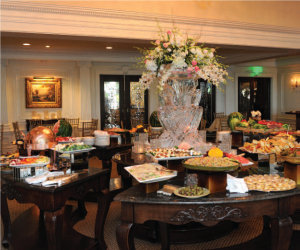
Photography by Light Impressions Photography ©2012 Courtesy of The Park Savoy Estate.
What’s on the Menu? Everyone has a different idea of what “wedding food” should be. When booking a venue, it is absolutely critical that your expectations are in synch with the kitchen’s. If chicken parm and pasta does it for you, fine, no need to pay for a CIA-trained chef. By the same token, if you expect the food at your event to meet the standards of your favorite four-star restaurant, then make that determination before you sign on the dotted line. The Park Savoy happens to have a CIA-trained chef, George Atieh. Among the favorites on his extensive passing menu are brie and pear tartlets, lobster bon-bons, grilled scallops with orange-saffron aioli, and spinach-and-feta “cigars.” Favorite main courses include porcini-encrusted Chilean sea bass, asiago chicken in a shitake-lime sauce, and a filet mignon with a secret rub (which Atieh will probably take to his grave).
The advantage of booking a wedding at the Park Savoy— or just about any other first-rate wedding hall—is that every aspect of the event is handled seamlessly by the staff. The bride and groom and their families are free to enjoy the day without sweating the details. That peace of mind can be absolutely priceless. “Our management becomes your wedding planner,” explains Sales Manager Melanie Clarke. “We have three different house bands, we have DJs, photographers, videographers, florists, and we can even make hotel arrangements for guests.” The process for booking a formal space is fairly standard throughout the industry. The initial meeting usually takes an hour and involves a tour of the facility and a sit-down with a sales manager. It’s helpful to have a few items squared away before you call, including the time of year you plan on tying the knot, the number of guests you’re considering and whether you intend to have the actual ceremony on-site or somewhere else. Be aware that every venue has a minimum and a maximum number of guests it can accommodate.
Also, afternoon weddings typically come with a generous discount, so consider that option to a prime-time evening affair. Part of the initial meeting will almost certainly involve a discussion of food. Every place has a set menu, often with a mind-boggling range of choices. Be prepared to think about hors d’oeuvres, chef’s stations, main dishes, and desserts—and whether you want waiter service or a lavish buffet. Some places will even handle your wedding cake, or at least point you in a reliable direction. If the executive chef is on hand, see if he or she can join the meeting. Often they will ask you things a salesperson won’t, and can guide you through the menu and answer questions. Most places will happily tweak their dishes to address dietary or cultural preferences. Alas, the rule of thumb for choosing a formal, do-it-all wedding venue is that there is no particular rule. It’s your day and your dollar, so pick a place that promises a memorable experience. If you get a good vibe when you walk in the door, trust it. If the chef speaks your language, listen. And if that final number is reachable, grab it and go!
Editor’s Note: Special thanks to George Atieh of The Park Savoy Estate in Florham Park. The property’s web address is theparksavoy.com.
My 30-day affair with Twitter
I am a cyber shut-in. I’m all about stamps and dial tones. I am an analog anomaly, the subject of eye rolls and exasperated sighs from techie teens, two of whom live under my roof. I am part of the generation whose fingers did the walking across yellow pages decades before they touched a keypad. To me, Twitter “tweets” seemed like 21st century postcards—an old idea shrouded in new technology. Go to any antique store (or to eBay if it’s easier) and read the flipsides of those ancient souvenirs. Same number of characters, same depth of thought and feeling. Am I the  only one who sees this?
only one who sees this?
Apparently I am. Nevertheless, one day my inner narrator whispered, “Look how much fun everyone is having as they fast-track through the ether world. Don’t you want to have fun, too?” So with deep skepticism and almost no eknow-how, I decided that I was going to give myself one month to figure out what Twitter was all about. My first hurdle was setting up my Twitter account. I felt an overwhelming surge of prickly heat before I even found the Twitter home page. Forget it. Too complicated. I listen to my body and it was telling me in every way that this was a stupid idea. Three days later I was enjoying a meal at the home of a friend who spends a good portion of his day inside the virtual world.
Normally I don’t have much to contribute when dinner conversation requires a degree in cyber-speak. Which is why everyone was surprised when I turned the topic to my brief and unsuccessful dalliance with Twitter. A Twitter account? Really? My host chuckled and said it takes about two minutes to set up. He’d do it after dinner. And that is how I had the Senior Chairman of the Visual Effects Society, the founder of the Visual Effects Awards— the special effects supervisor of countless big-budget movies—usher me into the world of Twitter. He even wrote my first tweet: Hi – I’m here. Sadly, it was probably my best.
My next step, I was told, was choosing people to follow. By the time we said our goodbyes, I had my own account, six people to follow, one tweet (or is it Tweet, upper case?) and had already absorbed a quirky story about New Jersey’s own Danny DeVito. If you didn’t know, Danny likes to tweet. Whenever he goes someplace new, he likes to take a picture of his bare foot and post it on Twitter. When asked why he does this, Mr. DeVito replied with a shrug, “People seem to like my feet.” I verified this story (with a couple of phone calls) and it’s true; Twitter @DannyDeVito and you can see photos of his foot. With a bounce in my step and a song in my heart, I announced to my teenage sons that I had a Twitter account. Silence.
Then, in concert, “No one will follow you, Mom. You don’t have any friends.” Yes, I do. “Are they on Twitter?” No, I don’t think so. “So, who’s going to follow you?” I slumped away. Before turning in for the night, I returned to the Twitter web site and discovered the How To Promote Your Profile option. I clicked on it, started reading, and promptly fell asleep. This is not how I learn. I needed to dive right in and get my hands dirty. I posted my first solo tweet: Writing this article for Edge magazine. How to tweet? The next day I had two followers. I felt great. I was liked! So, I tried another tweet to get more people: What happened with Katy Perry and Russell Brand? Is anyone surprised? I now hang my head in shame. What an awful tweet. Asking questions? Really? I later learned this was an efaux pas. Or a faux epas.
Apparently, another breach of etiquette is tweeting a response to a dinner invitation. You text that. Texting is conversational and more intimate; tweets are statements. I learned this from watching The Real Housewives of Beverly Hills, my guilty pleasure. Still, I had two followers, which is two more than I’d had 24 hours earlier. They looked young in their pictures, and sounded young in their tweets. I decided I should try to pull in more young adults, because they seemed to really like me. Then it hit me. Is Twitter a popularity contest? This was just the kind of garbage that went on in high school, and I was right back in it.
The only difference was that the entire world could witness my fumbling, not just a contained environment like a school. Whatever unfiltered idiocy that spilled out of my brain and onto a page would not only be broadcast for the entire world to see, but stored for eternity in some cyber-warehouse. I know that people find this kind of “immortality” appealing. I don’t. What did I have to say that was worth saying at all, much less saying in 140 characters? The question is almost metaphysical, isn’t it? So naturally I turned to my older son, age 17, for sage advice. “Write what you’re feeling, or doing,” he said. “Write something people would appreciate.” Then he turned his back on me and resumed doing his homework. The meeting was over, but I wouldn’t leave. He mumbled something about status update. “What’s that?” I asked. Now, he spun back around and glared at me. “Why are you even on Twitter?” “Because I have to,” I answered. “I’m writing a story. Can I follow you?” “No!” Other people tweet with confidence. I’m not talking about the Oprahs and Kelly Ripas of the world, celebrities who use Twitter as a tool to promote their talk shows. Or Conan O’Brian, who broadcasts mildly amusing quips. Or George Clooney’s tweet about going to a baseball game and then 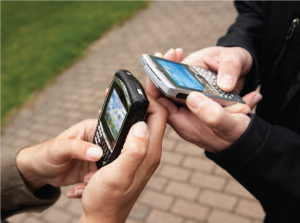 saying goodbye because he has to change his user name. (By the way, did you know that Lady Gaga has more Twitter followers than the Pope, the President, and Katy Perry—combined?)
saying goodbye because he has to change his user name. (By the way, did you know that Lady Gaga has more Twitter followers than the Pope, the President, and Katy Perry—combined?)
No, I’m talking about average folks, like my very first follower, who sometimes tweeted three or four times a day! She followed me because she wanted me to follow her, and I did; sometimes in horror, other times in awe. My follower “friend” tweeted that her mother called her an ugly weed so that she was never aware of anything until she was older. I wasn’t t sure exactly what she meant, but it sounded so sad. My very next tweet was from Barack Obama. It said In America we don’t give up, we get up. Yes, I thought, even ugly weeds can become flowers with a “can-do” attitude. Then the President tweeted that he was going to sign the payroll tax cut extension into law. My follower tweeted I’ve been out of work so long that I’ve forgotten how to hate people. Funny, but weird! The pressure to write something great was compounding by the hour.
I was riddled with performance anxiety. I would never have the guts to say something like “Color is an intense experience on its own,” and send it off into the universe unprotected. As a rule, if I am going to say something moronic, I want to be able to see how it lands on my listener’s face (because that’s half the fun in uttering banalities) or, at the very least, be able to defend myself. Tweeting, I was coming to understand, is like the speed-dating version of a blind cocktail party. Everyone is trying to impress everyone else, with nothing to back it up. However, it wasn’t until my younger son, age 13, began looking closely at my coterie of Twitter pals that total disillusionment set in. The young and attractive blonde woman who tweeted about all the racy things she wanted to do to other people, to herself, to me was not the flirtatious scamp I imagined her to be. Nor was my other follower all she seemed to be. I had wondered why she was always telling me about all the cool free stuff she was scoring—Playstation 3, Guess jeans, gift cards from Ikea and Best Buy, and CA$H—just by clicking onto a particular website or email. “Stop!” my son bellowed. “Mom, stop!” He demanded to see my Twitter account. I handed him my phone and after a few seconds he informed me that my friends were fake. “Definitely the blonde one is fake because all she talks about is sex and it’s an advertisement.” It is? He raised his eyebrows and nodded his head. “It’s hacked,” he said. “If you see a person post a link asking you to visit it, don’t do it!”
He repeated this warning to reinforce its seriousness. He refused to tell me what would happen if I did click onto these other links. Instead, he looked me in the eye, shook his head and murmured, “It’s bad, very bad. Don’t go there.” “Okay,” I said obediently, “I won’t.” But was he absolutely sure my friends are fake? Yes. Even the first one? The nice chatty one? Noting the disappointment  in my voice, he tried to soften the blow. “Well, I’m not 100 percent sure about her.” But I knew he was right. She was a fake, too. Then, to add insult to injury, follower number one dropped me while my son was holding the phone. “Snap, crackle, pop,” he smiled, “you’ve been dropped!” Of course I was dropped.
in my voice, he tried to soften the blow. “Well, I’m not 100 percent sure about her.” But I knew he was right. She was a fake, too. Then, to add insult to injury, follower number one dropped me while my son was holding the phone. “Snap, crackle, pop,” he smiled, “you’ve been dropped!” Of course I was dropped.
If you have nothing to bring to the table, who is going to invite you to dinner? Alas, in my month on Twitter, the most followers I had at one time was three. And near as I could tell, only one was real: ABC News. I am still waiting for the dinner invite to ABC’s house, and will text my RSVP. The fact that I even cared about the number of followers I had ticked me off. It really did stir up all those 10th grade emotions and insecurities. Three decades after completing my secondary education, I not only had slipped back into the worst part of high school, but had discovered the worst part of Twitter.
I actually felt lonelier when I was on Twitter than I did when I was off-line. As my month on Twitter drew to a close, I decided the two things I liked most about it were the news feeds and traffic updates. But, what’s the catch phrase? Oh yeah, there are Apps for that. So is there a need for Twitter? Socially, there is a place for it, but a need? I don’t think so. As a promotional tool for celebrities and event planners? Maybe. My read is that this is a moment that is happening, and people are lapping it up. It’s an easy way to be heard even if you have nothing important to say. It is freedom of speech if you can crush your thoughts into 140 characters. Perhaps, deep down, what appeals to people most about Twitter is that it is evidence that you exist.
Hi – I’m here. See, proof that I’ve lived. I tweeted a total of six times. Technically, I suppose the number was four. I did not write the first tweet, nor did I author the last one. My oldest son wrote my final tweet, and although it is something I would never say, I posted it because he finally came around and tried to help me explore this cyber world that seemed so vast and so alien to me. With that in mind I give you my final tweet exactly how my son wrote it: – omg i think i might be obsessed with this new thing called #internet shopping. “There’s a pound sign in front of internet,” I pointed out, ever the editor. “Mom, that’s a hashtag.” “What’s a hashtag?”
Editor’s Note: J.M. Stewart lives and works in Southern California. She interviewed Joe and Gia Mantegna for the Hot Stuff issue of EDGE and is working on an EQ vs. IQ feature for the upcoming Gray Matter issue.
All Photos credit: iStockphoto/Thinkstock
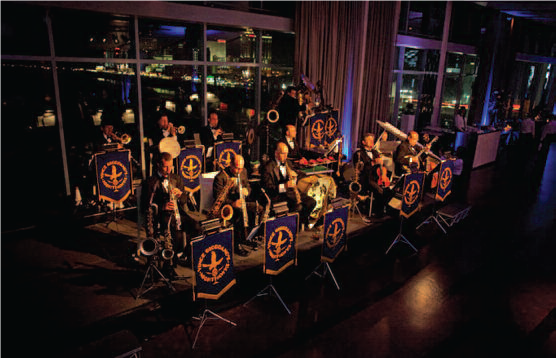
Vince Giordano’s Nighthawks perform in Atlantic City
Bix Biederbecke once said the thing he liked about jazz was that he didn’t know what was going to happen next. The legendary 1920s bandleader could just as well have been describing HBO’s Boardwalk Empire. It is loud and loose and right on the edge of crazy. Vince Giordano and his band, the Nighthawks, supply the music that drives the hit series. They can be seen performing in the lavish party scenes, and heard throughout each episode. Authenticity is the hallmark of the show, and Giordano is as authentic as they come. The Nighthawks work off the original band arrangements from that era— Giordano just happens to own the world’s largest collection. In 2012, he won a Grammy for the Boardwalk Empire compilation soudtrack…and suddenly, everyone is talking about (and downloading) the joyous music of the Roaring ’Twenties. EDGE Editor Mark Stewart—also a devotee of early jazz—spoke with Giordano after his weekly gig at Sofia’s Restaurant on West 46th St. in New York.
EDGE: At what point did you get the call for Boardwalk Empire?
VG: Right from the get-go. The same music team I worked with on The Aviator with Vincent Scorcese was asked to put together the music for Boardwalk Empire. They knew I had two houses bulging with 60,000 scores. We had such a fun time on the movie I said, “Let’s do some more!”
EDGE: With the added bonus that the show is filmed in Brooklyn.
VG: It’s really convenient. The set we work on is actually the recreation room of an African-American church in Bedford-Stuyvesant. The Boardwalk Empire team went in and rewired and repainted it, basically got it up to code, so when the show is done they’ll have a nice recreation hall. Some other scenes were shot in a mansion built in 1804 that’s part of the Brooklyn Navy Yard.
EDGE: How much acting direction do you and the Nighthawks get?
VG: When Scorcese supervised the pilot, he had a lot more direction for us. I even got some speaking lines. In subsequent episodes we’re more in the background. Our job is to mime the music we’ve recorded in the studio. So we have to look like we’re having a good time and make sure were in synch. We have these little devices called earwigs, which are wireless speakers we put in one ear. So when they want to knock out the music so they can capture the dialogue, we’ll still have it playing in our ears. You don’t want to be strumming or fingering and be really off—it looks bad.

© Zoetrope Studios
EDGE: People are always trying to spot that in movies, aren’t they? Hey! He’s not really playing!
VG: Oh, yeah. In the old days there was some real bad sidelining—that’s what we call it—where they put Joe Blow up there with a bass or a trombone or a saxophone and it was really apparent he had no idea what he was doing. You watch those scenes and say, “Oh my God, they couldn’t find some out-of-work musician to do this?”
EDGE: What was the first movie you and the Nighthawks were in?
VG: In 1984, a small version of the band was in The Cotton Club. Richard Gere portrayed a trumpeter named Dixie Dwyer in the movie. He had actually played a trumpet in his high-school days. He tried to get his lip back, which is pretty hard. The trumpet is a very demanding instrument. But he pulled it off. He did a pretty good job recreating those big Louie Armstrong solos. Richard was a very nice fellow, too. Very interested in our music, and very open to any suggestions we could give him.
EDGE: Do you have an opportunity to get to know the actors on a series like Boardwalk Empire? I ask because I know that Michael Pitt is a musician. By the way he’s definitely been bumped off, right?
VG: Oh, yeah. He’s gone. A lot of people were upset that they killed off Jimmy. I say just don’t kill off the band! No, but generally we don’t get a chance to hang out much. We’re so far away from the main actors on that set, and with time clicking away and so many people involved there’s just not the opportunity. Movies can be different. When we did The Aviator, Leonardo di Caprio came over and mentioned to me that he was very surprised that this music had so much spirit and fun to it. He said, “This is really exciting music!” Being a younger person, he was like a lot of people who’d never been exposed to this vintage music. It was a revelation.
EDGE: When you won the award for Best Soundtrack it was not on the Grammy television show. How did you find out?
VG: It was on the Grammy internet channel. The news came sometime the afternoon before the Sunday evening broadcast. I was playing a jazz party up in Connecticut and I got a text that said: WE WON. So you can imagine, we were running around screaming. People thought we were a little nuts. I’m happy we won. I’m even happier that the music will now get a little more attention.
EDGE: You shared that soundtrack with other musicians who’ve devoted themselves to the music of the 1920s and 1930s. Performers like Leon Redbone. What’s the feeling in that larger group? Does the Grammy give you all some validation?
VG: Definitely. All this work we’ve put in for all these years with doubting Thomases saying, “What are you doing with this old music? Get with the times!” We hung in there and it did something good for all of us.
EDGE: The Nighthawks formed in the 1970s. It’s quite something to keep a musical group together for 30-plus years. What was the band’s first break?

© Elektra/Asylum
VG: In the early 1980s we were bouncing around different night spots in New York City. We were playing at this club on the West Side called Sweetwater’s. An interesting fellow came in with thick glasses and a goatee. He asked for my card after the show. It was Ahmet Ertugun from Atlantic Records. Ahmet was extremely connected. He called Peter Sharp, the owner of the Caryle Hotel, and said, “You gotta get these guys in your room.” We worked there Sundays and Mondays. Those were Bobby Short’s dark nights. We did two seasons there. He and his wife also got us a lot of charity balls and private parties. We were working like crazy—the guys were actually complaining!
EDGE: You also played with Woody Allen.
VG: Yes, I was fortunate to work with Dick Hyman as a side man on about a dozen Woody Allen films. Dick called me up and said, “You really love playing this music. Sometimes I get musicians who are really talented, but who don’t have the spirit for this older music.”
EDGE: You’ve had this spirit all your life.
VG: Since I was five years old. The impact of this music really came from winding up my grandparents’ old Victrola and listening to their 78 collection. I have it in my home now—it’s my Rosebud, so to speak. Anyway, as a teenager I tried listening to rock ’n roll, but it just never sat well with me. The other kids were listening to the Beatles, of course. Coming home after school and turning on the TV you’d see those old comedies—The Little Rascals, Laurel and Hardy, the Warner Brothers cartoons—and they used a lot of that peppy music from the 1920s, with synchopated brass and whining saxaphone. So people would say, “There goes Vince with that ‘cartoon music!’” They just couldn’t understand what I was doing. It was tough as a teenager.
EDGE: Let’s talk about your vintage music arrangements. Is that the right term?
VG: Or stock orchestrations. These are band charts—not just the old piano sheet music you see in antiques stores. So if you were a bandleader back in the 1920s you would buy this packet of music and hand it out to all the fellows in your band. If you didn’t have your own arranger, these stock orchestrations were enough to get your band up and running. There were thousands of bands all over the world doing the exact same arrangements.
EDGE: Is it fair to say the “value” of these scores is that you don’t have to listen to the 78s and deconstruct the different parts?
VG: That’s quite true. For us to play this music exactly how we hear it on the recordings, it takes away a lot of the guesswork. Also, sometimes I’ll hear a great recording and pull out the arrangement, and see that someone in the band or one of the arrangers did something really special.
EDGE: How did you begin amassing your collection?
VG: I was a member of the musician’s union and put an ad in this publication that went out to the whole country, VISIT US ON THE WEB www.edgemagonline.com asking if anyone had these arrangements from the ’20s and ’30s. A lot of bandleaders who were getting up there in age—or their widows—offered to box them up and send them to me if I paid the postage or gave them a few bucks. This started in the mid-’70s. Then I went even further and began contacting the families of old musicians who had passed away. I would hand-write letters to their relatives explaining who I was and what I was trying to do. Many people called me and said, “Wow, we were going to throw this out—come over and take it.”
EDGE: And now you’re up to 60,000. Where do you keep them all?
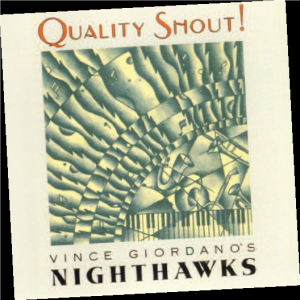
© Stomp Off Records
VG: I own twin houses in Brookyn. I moved there in 1979. The people across the driveway we shared passed away and I put a bid in for the house and got it. Once I got the second house my collection expanded. I am like the goldfish you put in a bigger pond who gets bigger.
EDGE: What’s the end game? Where does the collection ultimately reside, say, 50 years from now? What’s the ideal scenario?
VG: I plan to donate these to a foundation that is being set up by Michael Feinstein.
EDGE: I would think that a college or university would love to get its hands on these vintage arrangements.
VG: Our institutes of higher learning don’t seem to see this as valuable music. The jazz music they’re teaching kids is more modern—it starts with Thelonious Monk and John Coltrane. I’m all for that but, unfortunately, it almost seems as if one style of music is being erased by another.
Editor’s Note: Vince Giordano’s Nighthawks play every Monday and Tuesday night right on the other side of the tunnel at Sofia’s. To keep track of Vince log onto vincegiordano.com. To read about how Vince began his musical career, log onto edgemagonline.com for exclusive content.
As one patient learned the hard way, time does not heal all wounds.
Henry Schroeding, a 66-year old Delaware resident, was one of the more than five million Americans who deal with chronic, non-healing wounds. He tried self-treating a leg injury he incurred in the summer of 2009, employing over-the counter remedies for about 6 months. But the infection only became worse. Schroeding then opted for professional help at two reputable wound care centers in Delaware, where he underwent various treatments, including a vascular closing and a skin graft—unfortunately without much permanent improvement. In fact, a trip to the  beach the following summer resulted in the wound festering still further into a situation so serious that it could easily have become limb-threatening. Out of sheer frustration and in near panic, Schroeding resorted to doing his own research on the Internet and identified two out-of-state hospitals with highly renowned wound care centers: Johns Hopkins in Baltimore and Trinitas Regional Medical Center in Elizabeth. The Hopkins website cited a 60-70% heal rate, whereas Trinitas claimed more than 90% overall. That made the choice easy.
beach the following summer resulted in the wound festering still further into a situation so serious that it could easily have become limb-threatening. Out of sheer frustration and in near panic, Schroeding resorted to doing his own research on the Internet and identified two out-of-state hospitals with highly renowned wound care centers: Johns Hopkins in Baltimore and Trinitas Regional Medical Center in Elizabeth. The Hopkins website cited a 60-70% heal rate, whereas Trinitas claimed more than 90% overall. That made the choice easy.
Within two days of his initial phone call (and much to his pleasant surprise), Schroeding had an appointment at The Center for Wound Healing & Hyperbaric Medicine at Trinitas. His attending physician was Dr. Morteza Khaladj, DPM, FACPPM, Chief of Podiatry and Director of the Podiatric Surgical Residency program at Trinitas since 2006. Dr. Khaladj assured Schroeding that the Wound Center, which opened in 1997, is acknowledged to be one of the finest in the country, having received the Robert Warriner III, MD, “Center of Excellence” award from Diversified Clinical Services (DCS) in recognition of its excellent clinical results and its record for successful healing outcomes and overall patient satisfaction.
Dr. Khaladj attributes the center’s high ranking to its ongoing research, its challenging residency program, and its internal product testing and evaluation system. “That’s what keeps Trinitas in the vanguard of healing centers,” he says. The Trinitas Wound Center specializes in treatment of very serious and chronic wounds, many of which have undergone failed treatments elsewhere. It offers therapeutic treatments using three of the latest wound technologies: • Hyperbaric Oxygen Therapy or HBOT: administered typically to patients presenting with non-healing wounds from conditions such as gangrene, carbon monoxide poisoning or unsuccessful skin grafts. This involves placing the patient in a special chamber that delivers a healing 100% oxygen-rich environment through the bloodstream to the wound. • Apligraf Living Skin Device: utilizes a biological dressing produced under laboratory conditions that was first used in New Jersey at Trinitas, bringing relief to many patients suffering from limb-threatening venous leg ulcers and other types of hard-to-heal wounds. • Vacuum Assisted Closure (VAC): exerts controlled negative pressure, which helps to remove infectious material and promotes the growth of new blood vessels in preparation for successful grafting. Each patient is different, of course, but when pressed for an average healing time statistic at the Trinitas Wound Center, Dr. Khaladj indicated it typically might range from 4-6 weeks up to 2-3 months.
He affirmed that any individual suffering with a wound that shows no improvement within two weeks should be examined by a medical professional. For individuals with serious chronic conditions such as diabetes, any significant wound should be examined at least by a general practitioner as soon as possible. If the wound persists despite medical attention, then a wound treatment center should be consulted to benefit from their expertise and technologically advanced treatment alternatives. In Schroeding’s case the VAC therapy was determined to be the best treatment. After initial testing and final diagnostic assessment, he was admitted to Trinitas for a surgical procedure that involved removal of some affected muscle tissue. He continued to undergo weekly VAC treatments for the next 2 months. He also underwent a second skin graft, which this time was a total success.
Throughout his treatment, Schroeding did experience some pain, but at a level that was manageable with daily doses of aspirin and sometimes a more serious pain killer. Finally, after a total of almost 10 months of treatment, his wound was no more. As an overall assessment of his experience at the Trinitas Wound Center, Schroeding says that it was “way over 10 on a scale of 1 to 10”—and that his stay was the best time he ever spent in a hospital. “When I hit the call button, someone actually came right away. Amazing!” In short, although Trinitas was approximately 160 miles away, Schroeding gladly made the weekly 300-mile roundtrip that totaled more than 14,000 miles over his more than nine months of treatment. Dr. Khaladj adds, “Through all of our ongoing research and successful patient treatments, we know what works and what doesn’t work.” That would account for the center’s heal rate of 98%…and Henry Schroeding’s response to the question How are you doing? “Terrific!”
EDGE Editor’s Note: Henry Schroeding was interviewed while undergoing his treatment. Both he and Dr. Khaladj can be seen on YouTube at http://www.youtube.com/ watch?v=LfjrlDVbTwQ. For more information on the Trinitas Center for Wound Healing and Hyperbaric Medicine, call 908-994-5480 or www.WoundHealingCenter.org.
When relationships go from hopelessly devoted to just plain hopeless, it may be time to talk to a professional. Psychologists Dr. Rodger Goddard and Dr. Patricia Neary-Ludmer look at the ins and outs of Couples Therapy.
Goddard: Marriage and long-term, committed relationships pose intense challenges. They are strained by drinking, infidelity, parenting differences, stress, overwork, house-chore inequality, unresolved fights, emotional wounds from one’s childhood, anger, abuse, financial stress, instigation from in-laws, drug use, grudges and many other problems. The divorce rate in the U.S. is extremely high—estimates range between 45 and 55 percent. If you were to factor in break-ups in other committed relationships, there would be no telling how high that number might climb.
Neary-Ludmer: In isolation—in other words, just the one-on-one aspect of a relationship—couples generally communicate and connect fairly well. Otherwise they would go their separate ways. However, once they commit to each other the challenge begins. I believe most couples know how to communicate. If there is a problem, it’s likely due to the external pressures of life.
Goddard: Good communication skills are definitely essential. Couples should strive to be each other’s best friend. They need to be able to talk things out, articulate their inner feelings, and share their stress, emotions and thoughts with each other. Too often the hyperactivity of modern life, work and responsibilities do not leave time for enjoying each other’s company. Laundry needs to be washed, dinners served, children chauffeured, floors cleaned, shopping done, homework finished and hundreds of other chores carried out before affection, intimacy, friendship and romance can take place.
Neary-Ludmer: A common error couples make is focusing on building a beautiful marriage and family life without securing and feeding the foundation. They characteristically will sacrifice themselves to make sure their children’s needs and wants are being met, often at the expense of their own relationship. They forget about the importance of balance. A child needs to have parents that are happy and healthy. Otherwise the family structure will begin to crumble.
Goddard: I call it BC and AD. BC (Before Children) a couple focuses on each other. AD (After Da Kids) presents new challenges. The connection between couples now becomes a triangle pointed downward with a focus on the children. The connection between the couple can suffer. A new and revitalized couple connection needs to be reestablished and strengthened.
Neary-Ludmer: In our practices we see challenges to marriage that are very difficult and often require clinical intervention. They include coping with infertility, raising children with special needs, various types of addictions, the loss of a child, mental illness, and caring for elderly or sick parents. All of these put incredible stress on a relationship. For instance, untreated substance abuse or mental illness can be very detrimental to a marriage and family. Often it leads to lies, disappointment, betrayals and financial ruin. It causes the healthy spouse—and the family—untold pain and suffering. If the impaired spouse is unwilling to address the problem it often leads to divorce.
Goddard: Couples therapy is often extremely useful. Infidelity is an issue that often necessitates couples therapy. I enjoy doing couples therapy because it can be very easy to get a couple to remember what they love about each other, and how to treat each other special. Couples therapy is extremely helpful because it can provide a referee who lays down the rules of the game. A good therapist calls fouls and levels the playing field into one that supports both parties. Job number one is establishing guidelines for good communication. Sports and life necessitate effective game rules (e.g., no hitting below the belt, no clips, bring-downs, take-downs, or offensive fouls). It is critical for couples to focus on the specific things that they want from each other in the present and future, and not on all those horrific things that the other person did to them five, ten and 15 years ago. Too often couples get into endless nobody-wins power struggles.
Neary-Ludmer: Arguing and shutting down creates a disconnect; communication breaks off and the relationship suffers. Reestablishing that connection opens communication back up. And that happens by showing compassion and love. I believe that time is key. Make time to connect, just as you might schedule a music or tutoring lesson for your child. And protect that time. I encourage “date night”—not to focus on problems, but rather to laugh and talk and rekindle. Words are not necessary. Go to the gym together, garden together. Communication will follow.
Goddard: Among the most common important relationship problems I find is that couples often hold onto resentments, grudges and irritations with an iron grip. Another is the frustration that people feel when their viewpoint or emotions are not recognized or affirmed. It seems incredibly easy for two grown-up people to figure out who should take out the garbage on what day. And yet they do not, because… “He just doesn’t understand all the things I do around here” or “She just doesn’t understand that I need to unwind when I get home” or “He doesn’t show me decent respect when he speaks to me” or “Everything is a criticism from her” or “He is never available” …and on and on. Of course, these things need to be resolved. But a critical ingredient involves the other person feeling that their emotions, thoughts or desires are being understood. It is almost a primary motivation of ours to feel understood. When this need is not satisfied, bad things tend to follow.
Neary-Ludmer: Building a life together in today’s times requires hard work and discipline. It becomes quite the challenge to find time and energy for each other. And that work should really begin before committing to a long-term partnership. Ask yourself if you are being realistic about your relationship and being in love. Are you addicted to, or searching for, those early-on “honeymoon” feelings. Remember that falling in love is generally based on excitement, sexual energy and a desire to become one— to fill our loneliness and secure a future. Ask yourself, “Is this love? Is this really sustainable?”
Goddard: For a marriage to work, couples need to be able to “fight clean.” All too often when conflict arises, a spouse is likely to fight dirty—criticize, blame, shame and name everything the other person ever did wrong. When arguing, try to first “feed back” what you think the other person feels and wants. Change from being defensive— trying to overpower the other person, getting on the witness stand and arguing your point—to listening better, accepting the other person’s viewpoint and admitting imperfections. Let the other person feel they have a right to their emotions and what they want.
Neary-Ludmer: Almost every long-term relationship goes off the tracks at one time or another. If you’ve been doing the work all along, it’s much easier to get things back on track. Some of the guidelines I think are helpful include: • Be comfortable in your relationship…but do not take your spouse for granted. • Voice concerns…don’t build resentments. • Focus on the positives of your spouse…substitute critical thoughts with positive attributes. Remember that nobody is perfect, and the grass always seems greener on the other side. • Try to preserve trust… surviving lies and infidelity is very difficult. • Avoid trying to control…search rather for satisfying solutions that are mutual. • Allow yourself to be vulnerable…wearing emotional armor keeps out hurt, but also keeps out love and connection!
Editor’s Note: Dr. Rodger Goddard is Chief Psychologist at Trinitas and Director of the hospital’s wellness program, which provides companies, agencies and schools with on-site programs to improve health and productivity. Dr. Patricia Neary-Ludmer is the Director of the Family Resource Center in Cranford, an affiliate of the Trinitas Department of Behavioral Health and Psychiatry.
News, views and insights on maintaining a healthy edge.
 Don’t Walk Sign Are you a sleepwalker? If so, you’re definitely not alone. New research by the Stanford University School of Medicine found that somnambulism is far more prevalent than previous studies suggested. About 3.6 percent of American adults are prone to nocturnal wandering. That translates to 8.4 million. The same research suggests that sleepwalking is linked to anxiety and depression. A subject of humor and silliness in popular culture, this disorder can actually have serious consequences. Sleepwalkers have been known to injure themselves and others. They are also prone to psychosocial disorders. The Trinitas Sleep Disorders Center deals with sleepwalking and other problems every day. For information call 908-994-8694.
Don’t Walk Sign Are you a sleepwalker? If so, you’re definitely not alone. New research by the Stanford University School of Medicine found that somnambulism is far more prevalent than previous studies suggested. About 3.6 percent of American adults are prone to nocturnal wandering. That translates to 8.4 million. The same research suggests that sleepwalking is linked to anxiety and depression. A subject of humor and silliness in popular culture, this disorder can actually have serious consequences. Sleepwalkers have been known to injure themselves and others. They are also prone to psychosocial disorders. The Trinitas Sleep Disorders Center deals with sleepwalking and other problems every day. For information call 908-994-8694.
Oh, Canada The never-ending legal debate over medical marijuana acquired an intriguing new wrinkle in May after a report in the Canadian Medical Association Journal on the results of a new study on patients with Multiple Sclerosis. A group of MS sufferers with muscle spasticity (hard-to-control muscles) who had not responded well to traditional treatment showed a 30% reduction in spasticity and a 50% reduction in pain after smoking marijuana over a threeday period. The side effects were hardly a surprise. Patients showed a drop in cognitive ability and experienced some dizziness and nausea. A few reported feeling “too high.” The study only looked at short-term effects on the MS patients, but results were encouraging enough to warrant more extensive research.

New Options for Hospice Care One of the greatest concerns in hospices is preventing sudden and deep depression. Standard antidepressant medications are only marginally successful in this setting, as they take time to achieve their desired effect—and time is something hospice patients don’t have. That explains the buzz at the recent annual meeting of the American Academy of Hospice and Palliative Medicine when it was reported that methylphenidate and oral ketamine are showing considerable promise as extremely rapid-acting, safe, and cost-effective treatments. Ketamine in particular is a drug already used in hospices to deal with pain. According to Dr. Scott Irwin, director of psychiatry programs at the Institute for Palliative Medicine at San Diego Hospice, more research is needed. Clinical trials are problematic in hospices because of the high death rate, as well as informed consent issues. 
Answering the Call A college student who lives in New Jersey has filed a patent for a smaller, less invasive implantable cardioverter defibrillator—the battery powered device used to prevent sudden cardiac arrests in people who suffer from arrhythmia. Benjamin Strauss, a volunteer ambulance crew chief, came up with the idea after two calls to the same patient in Bergenfield in a span of two months. A biomedical engineering major at Cooper Union in New York, Strauss delivered the student commencement address this past May. The one-inch square defibrillator, which he dubbed iRescue, was created as his senior project. “I wanted to do something that would enable me, at some point, to actually contribute to making people’s lives better,” Strauss explains. “And I didn’t find anything that made this kind of treatment less invasive.”
 Another Link Between TV & Obesity From the “Wait, Didn’t We Know that Already?” department comes the news that kids who watch a lot of TV have poorer overall diets than kids whose exposure to television is limited. “The more TV you watch, the less likely you were to eat fruits and vegetables every day, and the more likely you were to eat things like candy and soda, eat at a fast-food restaurant and even skip breakfast,” says study author Leah Lipsky of the Eunice Kennedy Shriver National Institute of Child Health and Human Development. The research doesn’t prove that TV watching influences what kids eat, but strongly suggests a link between TV, snacking and a lack of exercise. Add questionable parenting to the mix and you have yet another contributing factor to America’s epidemic of childhood obesity. The average age of the children in the study was 13.
Another Link Between TV & Obesity From the “Wait, Didn’t We Know that Already?” department comes the news that kids who watch a lot of TV have poorer overall diets than kids whose exposure to television is limited. “The more TV you watch, the less likely you were to eat fruits and vegetables every day, and the more likely you were to eat things like candy and soda, eat at a fast-food restaurant and even skip breakfast,” says study author Leah Lipsky of the Eunice Kennedy Shriver National Institute of Child Health and Human Development. The research doesn’t prove that TV watching influences what kids eat, but strongly suggests a link between TV, snacking and a lack of exercise. Add questionable parenting to the mix and you have yet another contributing factor to America’s epidemic of childhood obesity. The average age of the children in the study was 13.

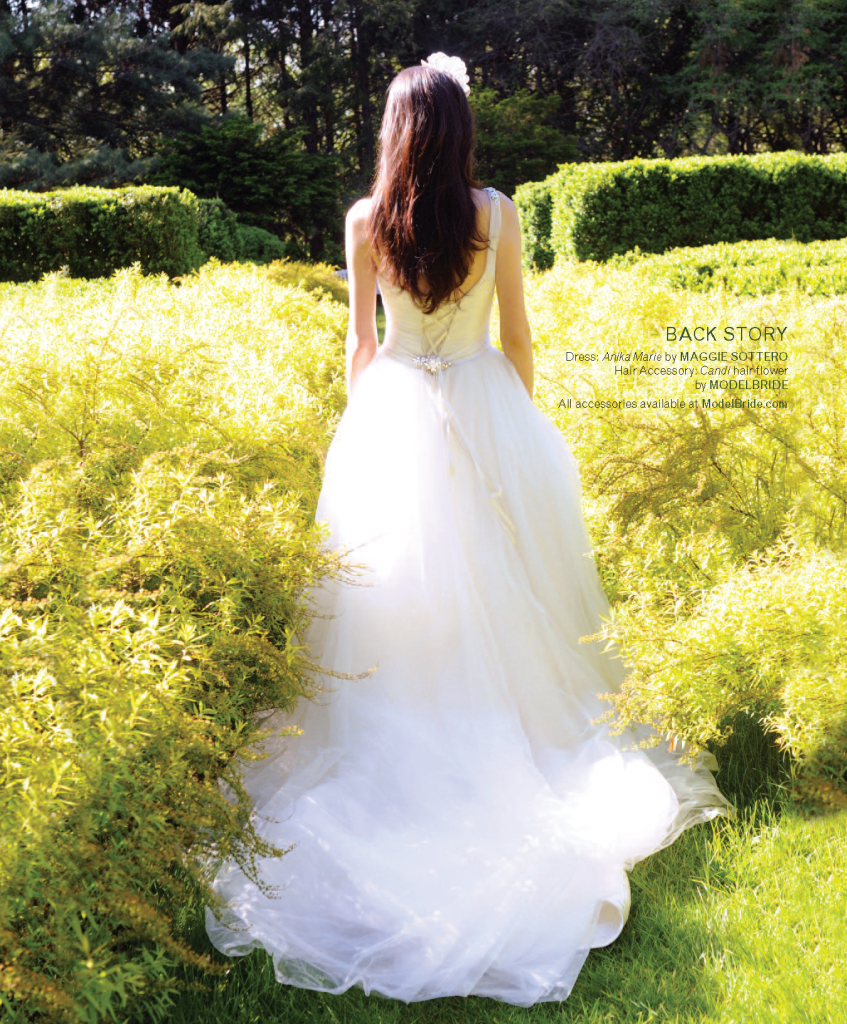

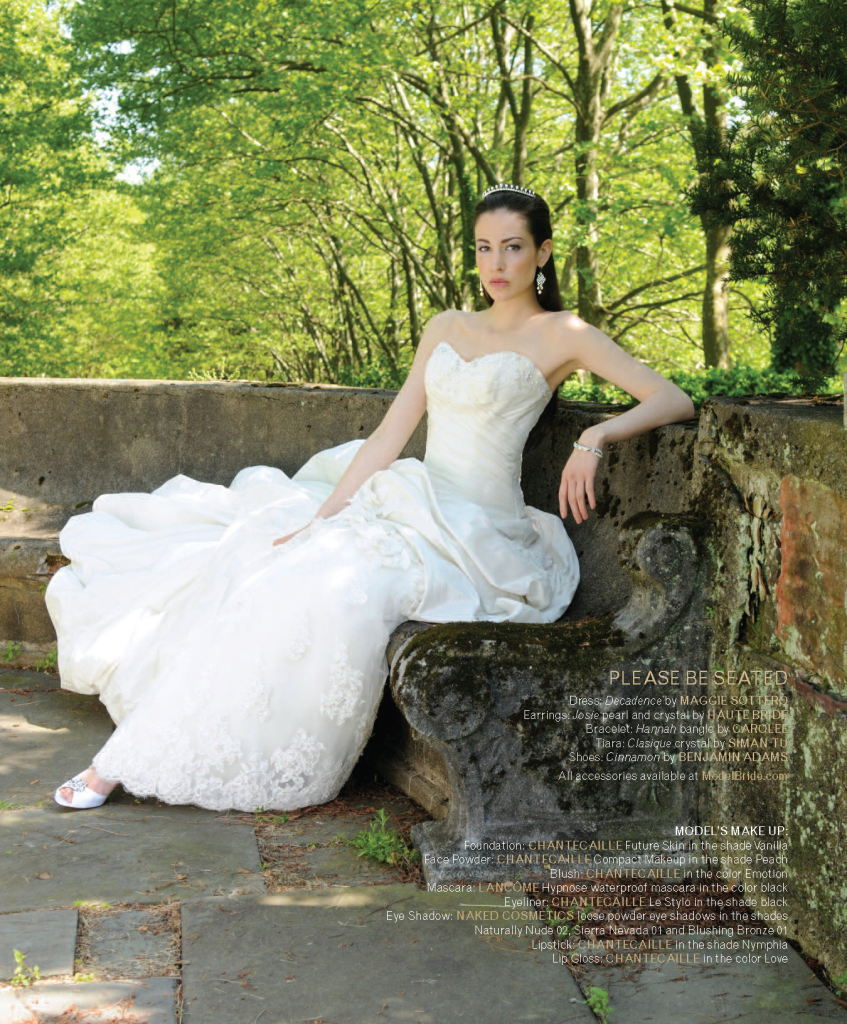
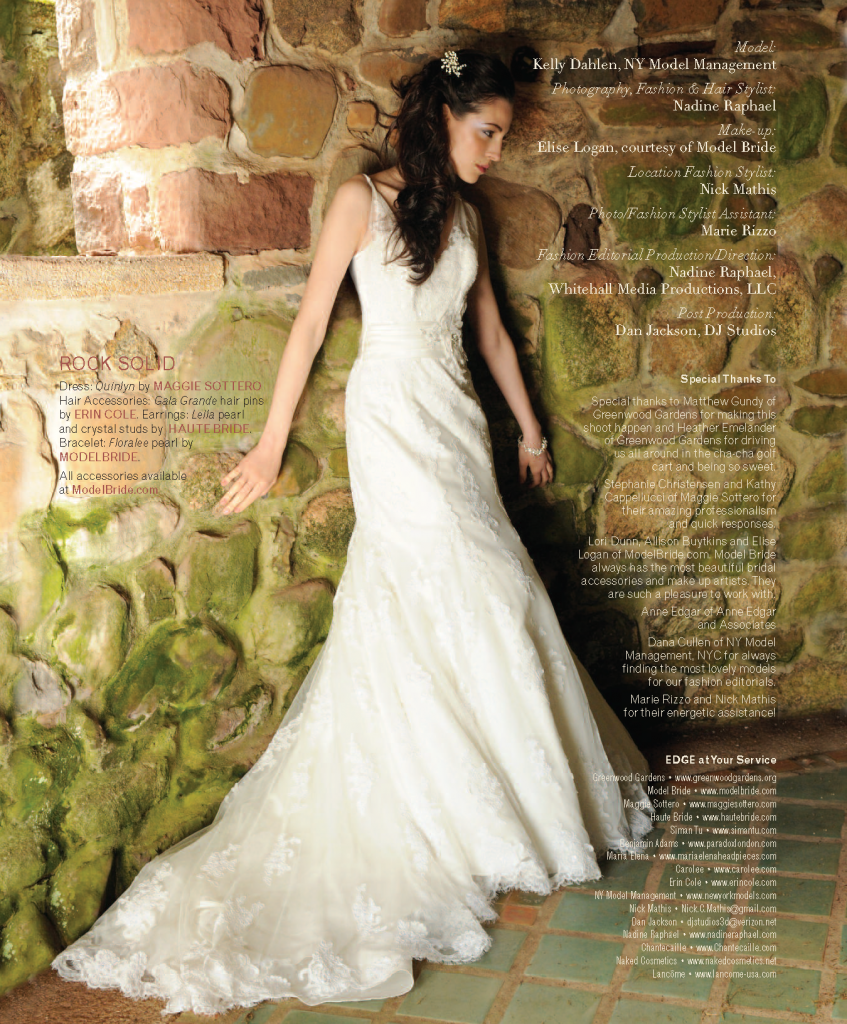
The film version of Grease—loved by some and ignored by others—has achieved classic status.

Photo credit: Paramount Pictures
Timing is everything. In the late spring and early summer of 1978, not a whole lot was competing for the attention of young people in this part of the country. Certainly, it was nothing like the summer of 1977. Lest we forget, one year earlier Son of Sam was running amok, the metropolitan area was plunged into darkness during the blackout, Reggie Jackson was the talk of the town and everyone was seeing Star Wars for, like, the fifth time. Into the media and entertainment lull of June 1978 burst the muchanticipated film version of the Broadway hit Grease. Everyone went to see it, and everyone walked out with an opinion. To those who’d seen it on the Great White Way during the 1970s—and so many of us did—something seemed a little lost in the Hollywood glitz and glamour. The fact that Danny, Sandy, the T-Birds and the Pink Ladies had been transported to the sunny suburbs of Southern California took off a bit of the edge that made the live show so much fun. On the other hand, to those who had only seen Grease performed by their high school drama club or had purchased the zillion-selling album or 8-track, the film was utterly fantastic. Looking back, what almost everyone can agree on is that, in defining the 1950s for a 1970s audience, Grease the movie defined in many ways who we were at the end of the 1970s. It was a confusing, dispiriting time of gas shortages, post-Vietnam-post-Watergate cynicism, serial divorce and unbridled narcissism. Everyone needed something uncomplicated to transport them to a time and place that clearly never existed, but was just real enough to provide a cherished escape. This was both the greatest strength of Grease, as well as its most glaring weakness. Perhaps the lyrics of Frankie Valli’s title tune said it best by saying nothing in particular: Grease is the word. It’s got groove it’s got meaning. Grease is the time, is the place, is the motion. Grease is the way we are feeling. To be sure, there was nothing particularly profound about Grease. And yet, all these years later, the movie has become a classic…and as such is deserving of a closer look.
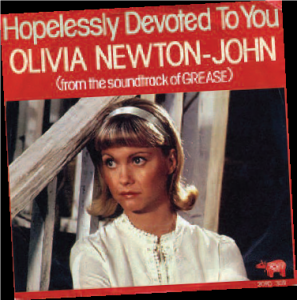
Photo credit: RSO/Polydor
THE CAST With Hollywood musicals on the downtrend, producers Robert Stigwood and Alan Carr set out to assemble a cast that would appeal to virtually every member of the human race. John Travolta (Danny) was the reigning Hollywood heartthrob, not to mention the unofficial king of disco. Olivia Newton-John (Sandy) was the goldenthroated Australian beauty who pumped out pop hit after pop hit during the 1970s. She had a readymade international audience and also pulled an older demographic into the multiplexes. Stockard Channing (Rizzo) reminded audiences of Grease’s Broadway roots. Never mind that she and Newton-John needed spatulas full of makeup to look Travolta’s age. Jeff Conaway (Kenickie) provided another tie to Broadway, where he won raves playing Danny. Conaway offered the added advantage of being one of the stars of the critically hailed television series Taxi, which went on the air in 1978. The supporting players were also hand-picked to please. Didi Conn (Frenchy) was coming off a starring role in You Light Up My Life, where she charmed audiences as an overachieving underdog. Eve Arden (Principal McGee), Frankie Avalon (Teen Angel), Sid Caesar (Coach Calhoun), and Alice Ghostley (Mrs. Murdock) were among the many veteran actors whose names and faces were as familiar as breathing. Even Sha Na Na, the revival band largely responsible for bringing back the ’50s during the ’70s, got into the act.
THE CRITICS To devotees of the Broadway musical, Grease the movie was a pale, predictable comparison. Critical reviews were somewhat mixed, but mostly positive. It received just one Oscar nod, that for Original Song — “Hopelessly Devoted to You.” Those who liked Grease agreed that it succeeded as a sweet, fun fantasy of American teen life in the 1950s. It grossed just under $9 million the weekend it opened in June 1978, and over the years returned many times its $6 million production cost at the box office. To date the movie has grossed over $150 million in the U.S.
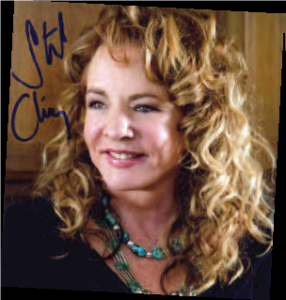
Photo credit: Upper Case Editorial Services
THE SONG Grease the movie reprised most of the key songs in the Broadway original, while adding three significant others, “Hopelessly Devoted to You”, “You’re the One That I Want” and the disco-inspired title track by Frankie Valli. Olivia Newton-John’s recording of “Hopelessly Devoted” soared to #3 on the Billboard charts in 1978. “You’re the One That I Want”—a duet with Travolta—topped the U.S. and British pop charts. “Grease” was written by Barry Gibb of Bee Gees fame, and was a hit on both the pop and R&B charts. “Hopelessly Devoted” was nominated for an Oscar but lost to Donna Summer’s “Last Dance”. It was also up for a Grammy but lost the Best Female Pop Vocal nod to Anne Murray’s “You Needed Me”. Newton-John had won the same award four years earlier for “I Honestly Love You”. She sang “Hopelessly Devoted” at both the Oscars and Grammys in 1979, and her performance at the Grammys brought down the house. “Hopelessly Devoted” and “You’re the One That I Want” were written by John Farrar. Farrar first worked with Newton-John when she appeared on Australian TV in the late 1960s on the American Bandstand-inspired The Go!! Show, where he was a member of the house band, The Strangers. They reunited a couple of years later at London’s Abbey Road Studios, where he worked as a studio musician on Newton-John’s string of hits in the 1970s. He wrote for and/or produced several albums for her, including Let Me Be There, If You Love Me Let Me Know and Have You Never Been Mellow. Farrar was one of several songwriters asked to submit new material for the film version of Grease, which needed more musical numbers to work on the big screen. In the 1980s, Farrar produced Newton-John’s double-platinum Physical album. In 1994, the British pop siren Sonia took over the role of Sandy in a West End production of Grease. Her version of “Hopelessly Devoted to You” turned on a whole new generation to the song, thanks in part to an edgy music video shot against an urban backdrop.
WHERE ARE THEY NOW?
John Travolta • Danny Zuko After Grease the law of gravity seized hold of Travolta. He began picking flops over blockbusters, famously turning down An Officer and a Gentleman and American Gigolo. He packed on a couple of pounds but kept his soft-spoken charm and good looks, which helped a resurgence that began with his Oscar-nominated role in Pulp Fiction. Since then he’s turned in memorable performances as good guys (Phenomenon), bad guys (The Taking of Pelham 1-2-3), and even a stage mom (Hairspray).
Olivia Newton-John • Sandy Olsson The sexy turn in Grease did little to impact Newton-John’s music or film careers. However, her timing couldn’t have been better a few years later when she released “Let’s Get Physical” at the beginning of the fitness boom and music video craze. In 1992, a comeback tour was derailed when Newton-John was diagnosed with breast cancer. She recovered and became an advocate for breast cancer research, adding this to a long list of humanitarian causes she has supported.
Stockard Channing • Betty Rizzo Channing’s fortunes skyrocketed after Grease —not bad considering she was in her mid-30s when she played Rizzo. Her acting résumé encompasses stage, screen and television, with countless nominations and awards, and a notable turn as First Lady Abbey Bartlet on The West Wing. J
eff Conaway • Kenickie On Taxi, Conaway played a handsome actor who could never quite catch the big break. The role was painfully close to the truth. By the end of the show’s first season he was overshadowed by the other members of the ensemble cast, including Danny DeVito, Judd Hirsch, Tony Danza, Christopher Lloyd, Andy Kaufman and Marilu Henner. Conaway spent the next two decades taking sporadic guest starring roles, before landing a regular part on Babylon 5. He gained some notoriety in 2008 when he was featured in the reality series Celebrity Rehab. In 2011, Conaway died at age 60 of pneumonia.
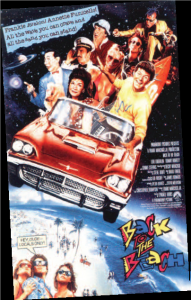
Photo credit: Paramount Pictures
Didi Conn • Frenchy Conn reprised her role in the unfortunate 1982 Grease II sequel, and then went on to starring roles in the TV series Benson and Shining Time Station. The mother of an autistic son, Conn became a celebrity spokesperson for Autism Speaks.
Frankie Avalon • Teen Angel Avalon appeared in a handful of films and television shows after Grease, playing himself (or some version of himself). His iconic status—and timeless good looks—helped him launch a cosmetics and skincare line. In 1987, Avalon appeared with his old buddy Annette Funicello in the movie Back to the Beach. In 2007 he crooned “Beauty School Dropout” for the finalists on the reality show Grease: You’re the One That I Want. And in 2009, at the age of 70, Avalon performed on American Idol.
Sid Caesar • Coach Calhoun Caesar stayed active in movies and television through the 1990s and beyond. In 1983, he hosted Saturday Night Live. He received a standing ovation and was made an honorary cast member in recognition of his contributions to live TV. Three years later, Caesar performed with the Metropolitan Opera. He turns 90 this September.
Eve Arden • Principal McGee Arden was a television, film, theater and radio giant long before she set foot on the Grease soundstage. Her final silver screen appearance came in Grease II. Arden passed away in 1990.
Annette Charles • Cha-Cha DiGregorio After Grease, Charles earned a handful of bit parts in television and movie productions. Although she stayed close to Hollywood, she didn’t quit her day job: speech professor at Cal State Northridge. Charles passed away from cancer in 2011 at 63.
Eddie Deezen • Eugene Felsnic Deezen’s performance as geeky Eugene established a blueprint for every film nerd that followed. Ironically, he was not cast in Revenge of the Nerds a few years later— although he is still asked about that movie on a daily basis. Deezen remains one of the busiest voiceover actors in the business. S
ha Na Na • Johnny Casino & the Gamblers Yes, they are still touring. And original members Donny York, Jocko Marcellino and Screamin’ Scott Simon are still with the band. Sha Na Na was at the height of its fame when Grease was filmed, with its own TV variety show that ran into the early 1980s. The popular front man Jon “Bowzer” Bowman went solo in the 1980s and still performs today around the country. For many years there was an urban legend that Bowzer attended Juilliard. It was actually true.
EDGE Editor’s Note: Mark Stewart attended the critics screening of Grease in 1978. He liked the new songs but didn’t think much of the movie—despite a family connection to the Travoltas.
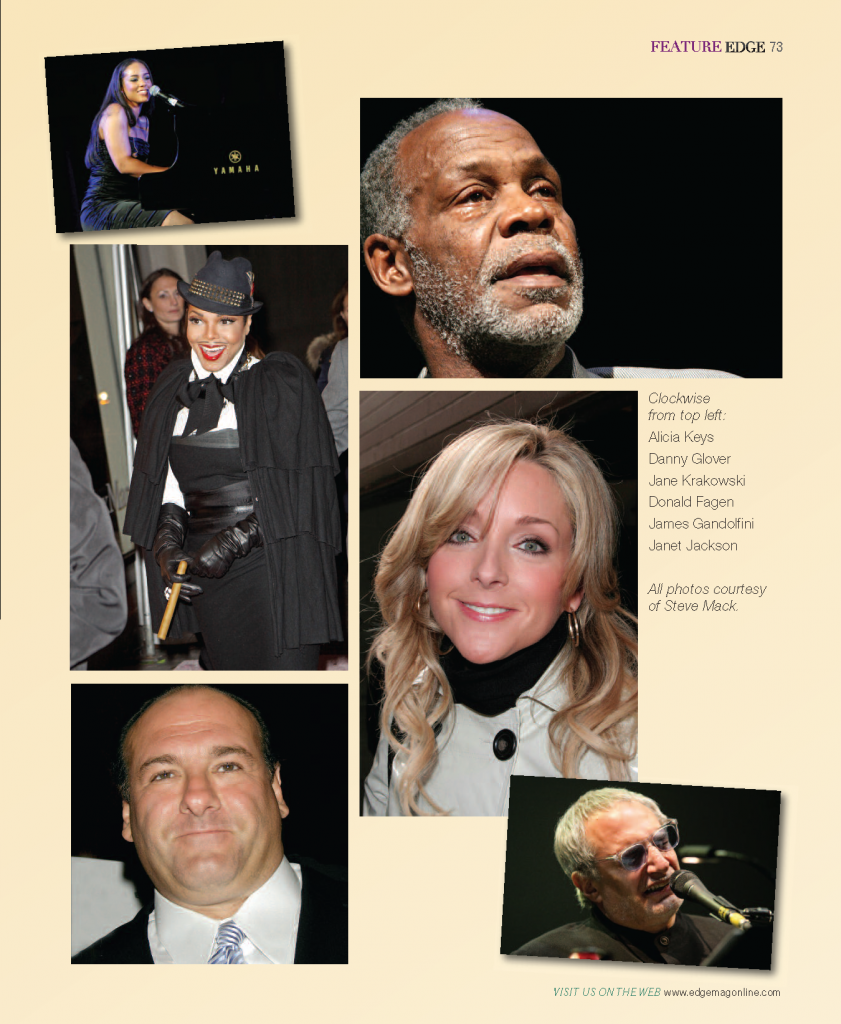

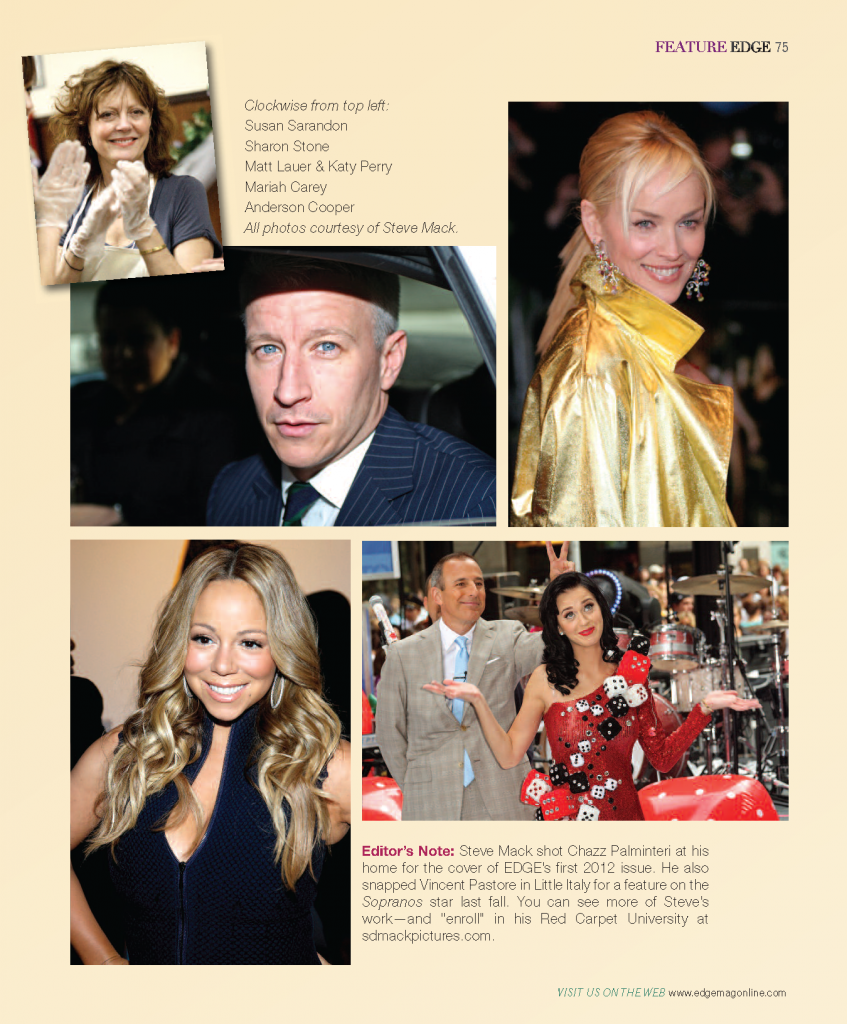
The economy’s down. Flyaway weddings are up. What’s the deal?

Photo credit: iStockphoto/Thinkstock
Of all the decisions a soon-to-be-married couple must make, none are more exciting, stressful or complex than picking a place to make it all happen on that special day. It’s a Rubik’s Cube of timing, geography, family politics and culture, and expense. With increasing frequency, the solution many couples choose is to eschew local and start thinking global for a glamorous destination wedding. Where and why the betrothed decide to go depends on a long list of variables. It also says a lot about how modern society has evolved. Not all that long ago, when people tended to start families and careers closer to home, relatively few weddings fit into the “destination” category. Today, that category comprises slightly more than half of all weddings. Let me explain. Technically speaking, a destination wedding is one that takes place outside the city where a couple currently resides, or where either soon-to-be spouse grew up. So two people who grew up in Bergen County, live in Union County and work in Manhattan could have a wedding in Princeton and it would be considered a destination wedding. When the travel industry talks about destination weddings, it is referring to something a bit more exotic. These are the events held thousands of miles away, typically in spots where the happy couple intends to honeymoon. Guests who can afford the time and expense don’t depart the next day; they tend to make a vacation of it. These nuptial jaunts have become big business for hotel and resort chains stinging from the current economic swoon, and an important profit center for enterprising small hotel owners around the globe. Indeed, both groups have developed appealing packages that they market very aggressively through travel agents and wedding planners. At first blush, the steady growth of the destination wedding business may seem surprising in these trying times. That’s because, when the trend first gained mainstream momentum a decade or so ago, it had glamour and snob appeal. There is still that element, to be sure, but it is the tightening economy that has actually propelled the destination wedding business forward. The fact of the matter is that a destination wedding, if planned properly, is actually far more economical than a traditional marital event.
Appealing Numbers The numbers are easy to follow. A traditional wedding may generate 150 to 200 invitations with a regrets rate of 10 or 15%. Even watching every penny, by the time all the checks are written the price tag is likely to range between $25,000 and $50,000. Move that same wedding to a Caribbean resort or the Amalfi Coast and the guest list shrivels to around 30. Keeping them well fed and lubricated for a few days will cost less than half of the at-home wedding; most reports actually put that number as low as one-third. Plus, the happy couple is already in situ for their honeymoon. Among the other advantages of a destination wedding is that the bride and groom get to spend quality time in an exciting place with an intimate circle of guests. It’s like spring break for grown-ups. Indeed, in most surveys the percentage of couples that choose a destination wedding for an “intimate group” is actually slightly higher than the percentage that say they did so for an “exotic locale.” For the destination wedding guests there are advantages, too. Since about half of all guests have to travel a significant distance no matter where a wedding is held, it’s not asking a lot for them to journey a few extra miles or spend a few extra dollars. The real deal-breaker is timing. If guests can’t swing the vacation days or find adequate childcare, they have to say thanks but no thanks. But for those who have the time and money, a destination wedding doubles as an unforgettable getaway. It’s a win-win.
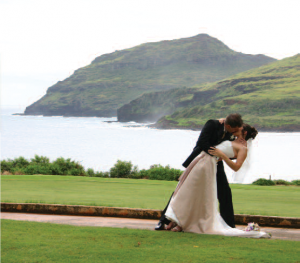
Photo credit: iStockphoto/Thinkstock
Where on Earth? A destination wedding can take place anywhere in the world, and can certainly happen in the United States. Miami Beach and Las Vegas, for example, rate high on the list of wedding destinations. Hawaii is also popular, especially with left-coasters. For New Jerseyans, the Hawaiian Islands have the additional advantage of further thinning out the guest list (it’s a really long flight). As a rule, the more popular destinations tend to involve water, beaches or a major city. Jamaica, with its many resorts, offers a lot of choices at different price points. Ditto for Mexico, where building along the Riviera Maya south of Cancun has been proceeding at a breakneck pace. Travel agents are also pushing Fiji (talk about a long flight!) and smaller spots in the Caribbean like Anguilla, which offer opportunities to explore neighboring islands. Another emerging hot spot for destination weddings is India. In many cases, Indian-born American-raised couples (or halves of couples) choose their wedding day not only to rediscover their heritage, but to immerse their non-Indian friends in a new culture. Many of the aforementioned places have become popular wedding destinations for another reason: They allow foreigners to tie the knot without suffocating them with paperwork or make them jump through ridiculous hoops. Every year, countless couples plan weddings in countries with quirky marital laws and don’t realize their blunder until they have started buying tickets and plunking down deposits. You may think a wedding in London sounds brilliant. Think again. The amount of red tape involved can be absolutely staggering.
Editor’s Note: An internet search for Destination Weddings will yield an endless stream of commercial web sites. They are fine to start with, but you may find unfiltered firsthand opinions to be more helpful. Many newlyweds blog about their destination weddings, and even more broadcast real-time details through social media web sites like Facebook.


